The long echo of WW2 trauma
- Published

Richard Burton and Arthur "Dutch" Schultz played by Richard Beymer in The Longest Day

World War One and Vietnam are the wars most closely associated with post-traumatic stress - but it was also a huge problem for the combatants in World War Two, and one that may still be affecting their children and grandchildren today.
At the end of the 1962 film, The Longest Day, a young American paratrooper shares a cigarette somewhere in Normandy with a British fighter pilot, played by Richard Burton. It's a meeting of innocence and experience. Burton's character has been fighting since the Blitz but has finally received a wound that will end his war. For the hapless Pte Arthur "Dutch" Schultz, on the other hand, it's all just beginning. After landing in a tree miles from his intended drop zone, he's spent his first day of combat searching for his unit, walking towards the sound of fighting, but never reaching it. He hasn't yet fired a shot in anger.
The real Dutch Schultz's D-Day bore little comparison. It's true he was dropped in the wrong place, but after making contact with other wandering soldiers he soon came under fierce mortar fire and witnessed the mercy killing of a horribly wounded US soldier. By evening he was engaged in a bitter battle for control of a bridge near the town of Sainte-Mère-Église, which continued for four days until German forces eventually withdrew.
In the Netherlands in September 1944, Schultz frantically prayed with his rosary as his company commander died in front of him. For two weeks that winter he was treated in hospital for pneumonia; when he returned more than half his regiment had been killed in the Battle of the Bulge. The horrors culminated in the liberation of the Wöbbelin concentration camp, where he later said "it was difficult to distinguish the living from the dead".

Dutch Schultz at his wedding in 1945

Whether or not the irrepressible boy-next-door played by actor Richard Beymer in The Longest Day bore any relation to the real Schultz who parachuted into France, the man who returned home to the US was entirely different. The happy-go-lucky joker his girlfriend had been waiting for since 1943 had turned sombre and melancholy. After they married in December 1945, she had her first experience of his nightmares - as they travelled west by train to visit his parents, he shouted in his sleep and tried to climb out of the window. She also noticed that he had began to swig regularly from a flask.
"My father was a functioning alcoholic," says Schultz's daughter, Carol Schultz Vento. "It was self-medicating, really."
The dominant narrative at this time was relentlessly upbeat, she says. The heroes of World War Two were now building a prosperous post-war society. People who remarked upon the large numbers of marriages in the immediate post-war period tended not to mention the record number of divorces. The fact that veterans' hospitals were full of men with serious mental health problems went undiscussed. The movies of the 50s and 60s did not depict the reality of war.
"People did not want to know what it was like," her father told her.
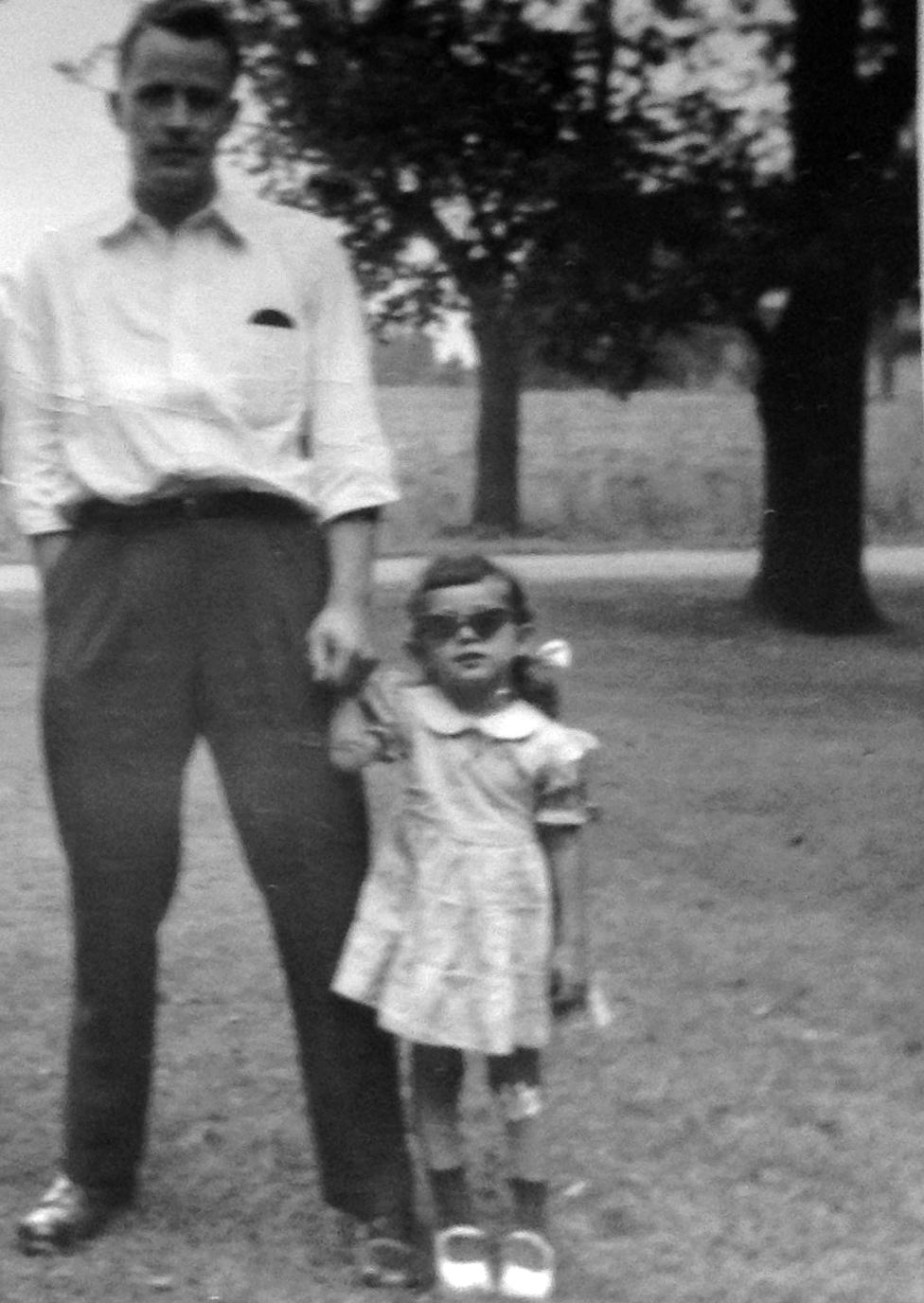
Dutch Schultz and his daughter, Carol

Unlike some troubled veterans, Dutch Schultz was never violent and didn't fly into rages. When he was drunk he was "either goofy or crying", Carol says.
But his nightmares continued for the rest of his life. Carol's mother described routinely waking up to find not only the sheets but also the mattress soaked in sweat. After they divorced, Schultz called Carol one night, sobbing down the phone line. His new wife had tried to slit her wrists in the bath and Schultz said he now wanted to kill himself. He had been a terrible father, he said; Carol told him this wasn't true. Years later she learned that he had been holding a gun to his head as they spoke.
After this Schultz went into rehab and built a career running anti-alcohol and anti-addiction programmes. He fought continuously to persuade the Department of Veterans Affairs to recognise and treat the psychological wounds he had brought back from the war, winning this battle only at the age of 80 - two years before he died.

After the existence of post-traumatic stress disorder (PTSD) was officially recognised by the US government in 1980, in the wake of Vietnam, researchers began to take an interest on the illness on soldiers' families. Studies were already suggesting that the children of Holocaust survivors could be severely affected by the trauma experienced by their parents. "It would also be easier to believe that they, rather than their parents, had suffered the corrupting, searing hell," wrote the author of the first paper on intergenerational trauma among Holocaust survivors, external.
There has been very little comparable work on the families of traumatised WW2 veterans, but one 1986 paper by Robert Rosenheck, external, focusing on the families of five men receiving treatment for chronic PTSD, suggested a range of possible outcomes.
"For some of the veterans' offspring," he wrote, "it was as if they were… constantly embroiled in a shared emotional cauldron."
For these children, life was a series of anticipations of and reactions to their father's moods, impulses and obsessions. For some it resulted in a preoccupation with surviving danger or winning fights - "a virtual mirroring of issues preoccupying their fathers". For others, "the intense emotional involvement consisted of frantic efforts to keep their father calm, out of trouble, and in as good spirits as possible".

Carol and Dutch
One of the 12 children in the study, who grew up knowing of his father's nightmares, suffered from enduring nightmares himself, in which he and his father were drafted to fight in a war and he was desperately looking for ways to keep his father from danger.
By contrast there were other children who kept aloof from their fathers, and some who generally disengaged from the emotional life of the family.
The group of children most deeply affected by their fathers' PTSD over-identified with them, Rosenheck said, experiencing "secondary traumatisation". Another group, in which there was less evidence of strong identification with their fathers as war veterans, he labelled "rescuers". These manifested "an intense sense of responsibility" for their fathers, he wrote.
Carol Schultz Vento feels that she is in the "rescuer" category. She remained close to her father and took a strong interest in his life and his problems. After therapy herself, she started asking him about things he had never spoken about - and wrote a book about his wartime experiences, his struggles with PTSD and the failure of the post-war society to recognise the suffering of so many servicemen of the "Greatest Generation".

Roy "Eric" Cooper left Burma at the end of the war, but Burma never left him, according to his granddaughter, Ceri-Anne Edmunds.
"Every second of every day, Burma was with him, even to his last breath," she says. "He would wake up with nightmares every single day."
Up and about by 4am, he would do the same exercises on a mat every morning, using tins of vegetables as weights, until he died in February this year at the age of 98.
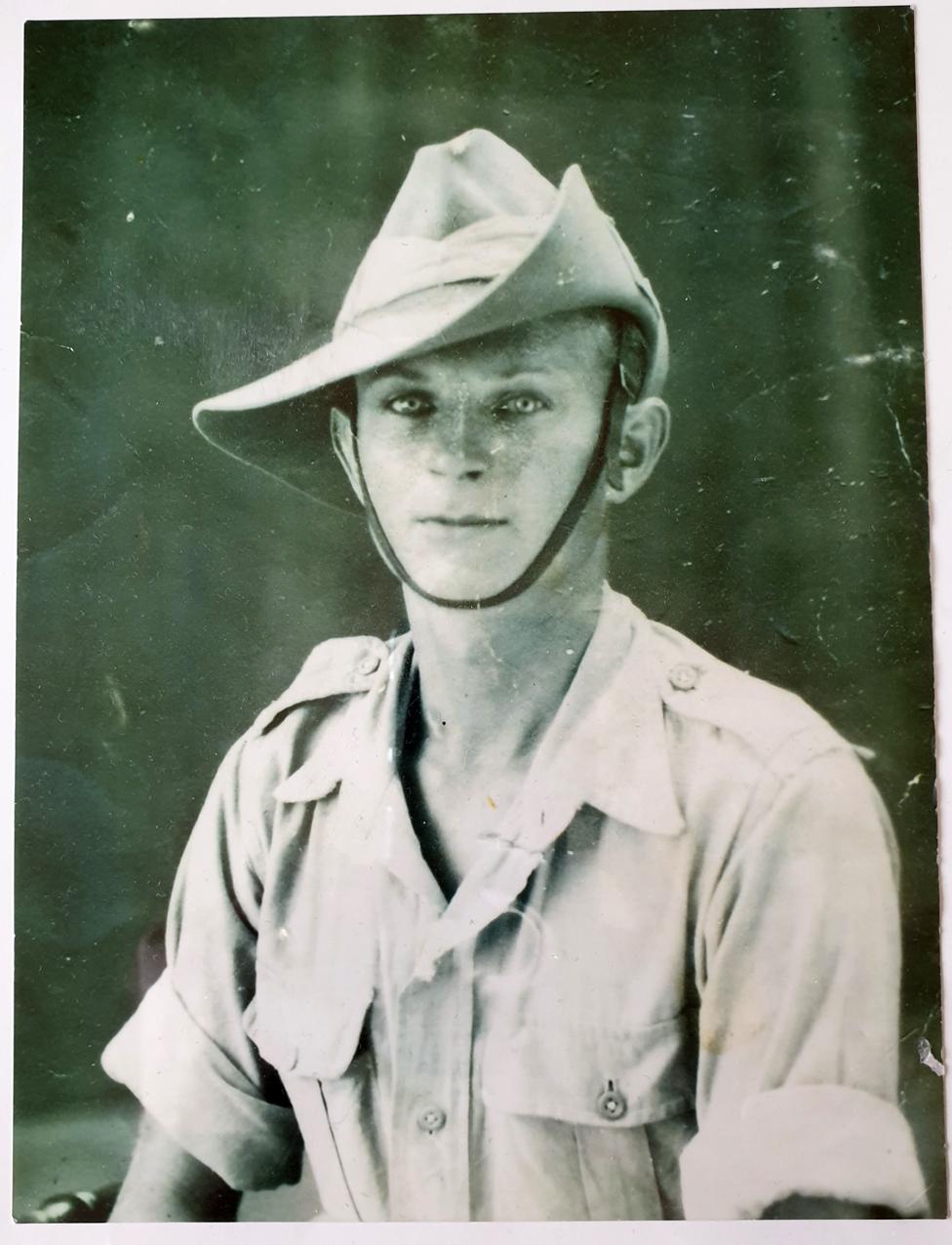
Roy "Eric" Cooper in uniform

In Burma, Cooper was a sniper whose job was to provide cover for troops advancing in the jungle. If a Japanese marksman killed one of his comrades, he felt responsible. He was particularly troubled by one incident when a bullet whizzed past his hat and hit another man in the head. "I should have got him," he said.
On another occasion he had to search for the dead body of a friend. The Japanese soldiers would take the boots and then booby-trap the corpse. Cooper described having to prod the body with a stick to check it was safe to move and to bury.
In some ways he liked the jungle; he liked living close to the animals. He put up with the leeches, foot-rot, shirts that disintegrated from being soaked in sweat. The experience had shaped him before it began to haunt him.
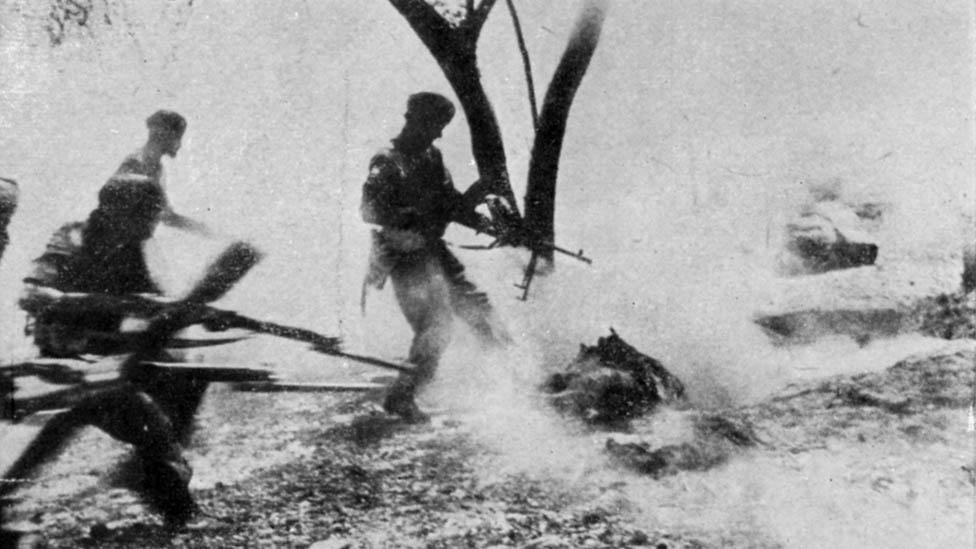
Soldiers in Burma in 1942
Unlike many soldiers of his generation Cooper recognised, on his return to the UK, that he had a problem. He had the courage to go to a doctor and say, "I don't feel very well in my mind," Ceri-Anne says. Unfortunately, the psychiatrist he was referred to compounded the problem by putting him on a high dose of valium, which he continued to take for 10 years.
"It was amazing to begin with, but then it backfired," says Ceri-Anne.
He started drinking heavily, occasionally becoming frighteningly angry. Though he was never physically violent, to Ceri-Anne's knowledge, he could be very threatening.
Then, in an extraordinary act of willpower, he stopped taking the valium overnight, stopped drinking and learned to strengthen his powers of self-control by practising martial arts. But now he had another source of guilt - the way he had behaved towards his family.
"I am a bad man," he told Ceri-Anne, years later.
"You are my hero," she replied.
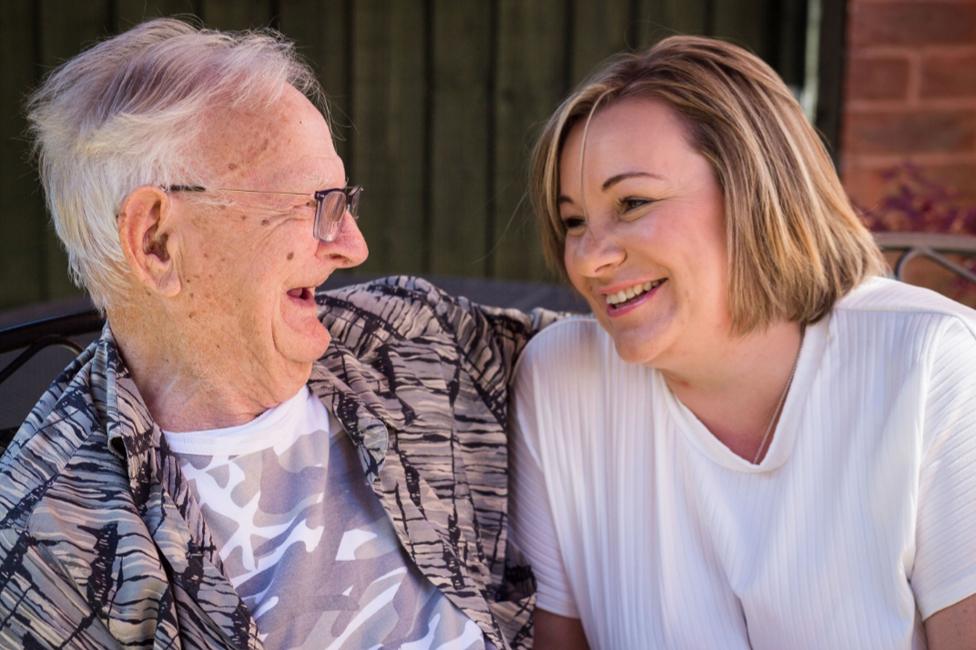
Roy "Eric" Cooper and Ceri-Anne Edmunds
Cooper fell off the wagon a number of times in his life, and was always prone to outbursts of anger, as well as the nightmares and flashbacks. But he was also loving, protective and supportive of all his family until the day he died, Ceri-Anne says.
Though his behaviour caused strains and divisions within the family, Ceri-Anne grew especially close to her grandfather. He confided in her and listened to her when she gave him advice. She was deeply concerned about his welfare and did whatever she could to help him. Despite the jumping of a generation, her relationship with him mirrors the "rescuer" relationship between Carol Schultz Vento and her father.

According to researchers from the Centre for Military Health Research at King's College, London, there is now a consensus that a close relationship exists between the incidence of death and injury on the battlefield and the number of psychiatric casualties, though it may be mediated by the nature of the fighting, the morale of the troops and the quality of leadership.
Normandy and Burma saw some of the most intense fighting of the war, and by 1944 the British military had learned that provision would have to be made for psychiatric treatment. Experience had shown that "every man has his breaking point". But the centres set up in Normandy for mental health treatment were nonetheless completely overwhelmed. Many casualties had to be sent back to the UK.
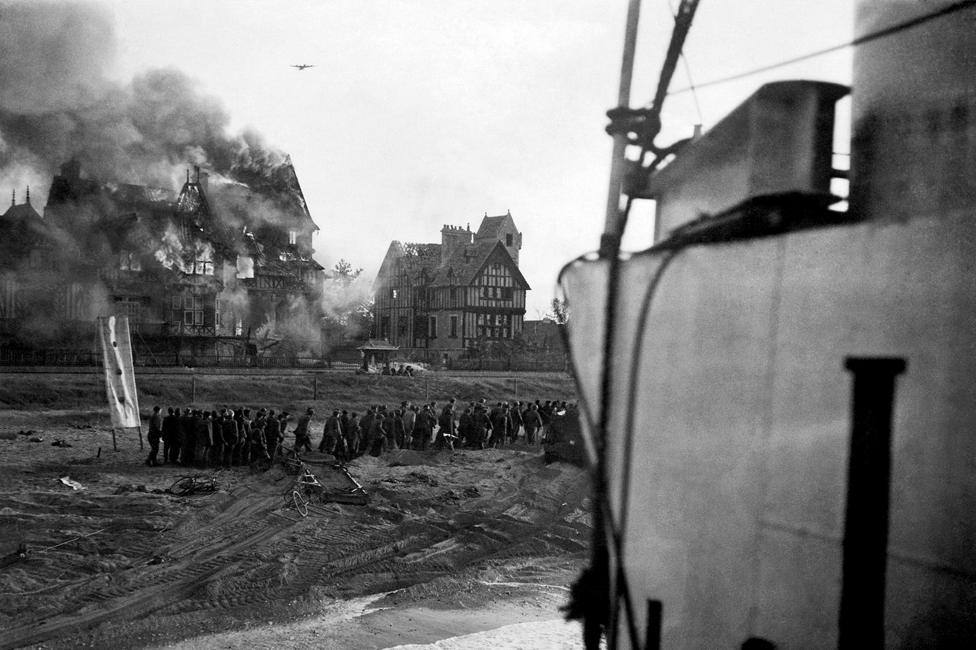
A German bomber in action on D-Day, as German prisoners are moved from Juno beach
Treatment close to the front was extremely limited. Soldiers were given sedatives to knock them out and enable them to sleep. Then they were given good food, a wash and reassurance. They were described as being "exhausted" - a deliberate attempt to demedicalise the condition. It was thought that the term "shell shock" used in World War One had encouraged men to believe that they were ill, and set back a natural recovery process.
Despite claims at the time that a large proportion of those treated for exhaustion in Normandy returned to their units, Prof Edgar Jones of the King's Centre for Military Health Research and Stephen Ironside have calculated that only 1% went directly back into action, external. Some of the rest will have returned to combat after a period of further convalescence. Others were directed into non-combat roles or sent home.
Many traumatised men also managed to keep going without treatment, Jones suggests.
In a study of people receiving war pensions for psychiatric illness, external between 1940 and 1980, a team of researchers found that the 10 most common symptoms were anxiety, depression, sleep problems, headache, irritability/anger, tremor/shaking, difficulty completing tasks, poor concentration, repeated fears and avoidance of social contact.
Some of these symptoms could contribute to the "shared emotional cauldron" detected by Robert Rosenheck in the traumatised veterans' families, which led some children to share their father's pain.
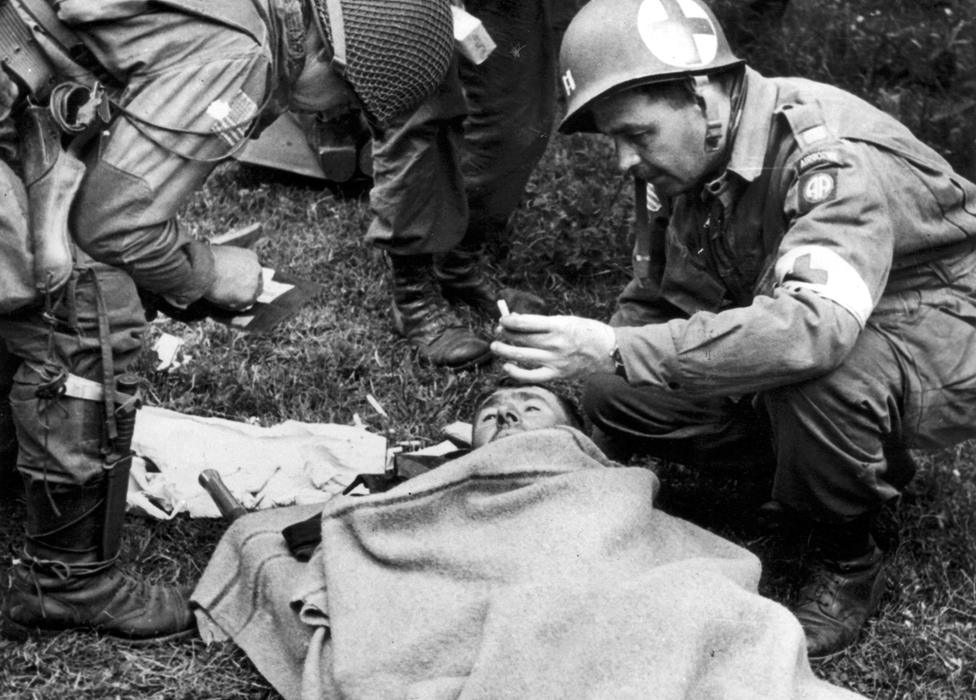
A doctor of the US 82nd Airborne division cares for a wounded German prisoner in Normandy
But for Prof Siobhan O'Neill of Ulster University, the most obvious way for a parent's trauma to affect a child would be by hindering the development of a strong and secure attachment between parent and child in the early years of the child's life.
"It's pretty well accepted that an impact on the attachment between parent and child will impact on mental health," she says. "A traumatised parent can have difficulty forming a secure attachment with the child, and families that have been affected by violence, that are rife with drug and alcohol abuse - dysfunctional families - this is detrimental, and children may not do as well."
She also finds "plausible" recent research that suggests the effects of trauma could be inherited by means of chemical changes to the surface of genes, altering the way they behave. This field of study is known as epigenetics; the relationship between the genes and the chemical changes to their surface (epigenetic marks) has been compared to the relationship between the hardware and software of a computer.
O'Neill points to a study of mice that were given electric shocks when exposed to the scent of cherry blossom. The researchers found that the children and grandchildren of these mice also showed signs of anxiety, external in the presence of the scent.
There have also been many intriguing studies involving humans. One revealed that children in the womb during a Dutch wartime famine were prone to obesity in adulthood, and tended to die younger than those born just before or conceived just after. The researchers also found an epigenetic mark that these children had in common.
But while scientists have identified a molecular pathway through which the transmission of the effects of trauma from parent to child might occur in mice, this has not yet been achieved in the case of humans.
"At the current time, the idea that epigenetic mechanisms underlie clinical observations in offspring of trauma survivors represents a hypothesis to be tested," wrote Rachel Yehuda, one of the leaders in the field, in a paper with Amy Lehrner last year, external.
O'Neill notes that there is sometimes resistance to the idea of epigenetically transmitted transgenerational trauma "because it's seen as deterministic… the idea that you are doomed from the start, and that babies are born with a disadvantage".
If we were all carrying biological traces of our grandfathers' or great-grandfathers' war traumas, not to mention our ancestors' experiences of famine, rape, forced migration or slavery, it would certainly be a gloomy picture.
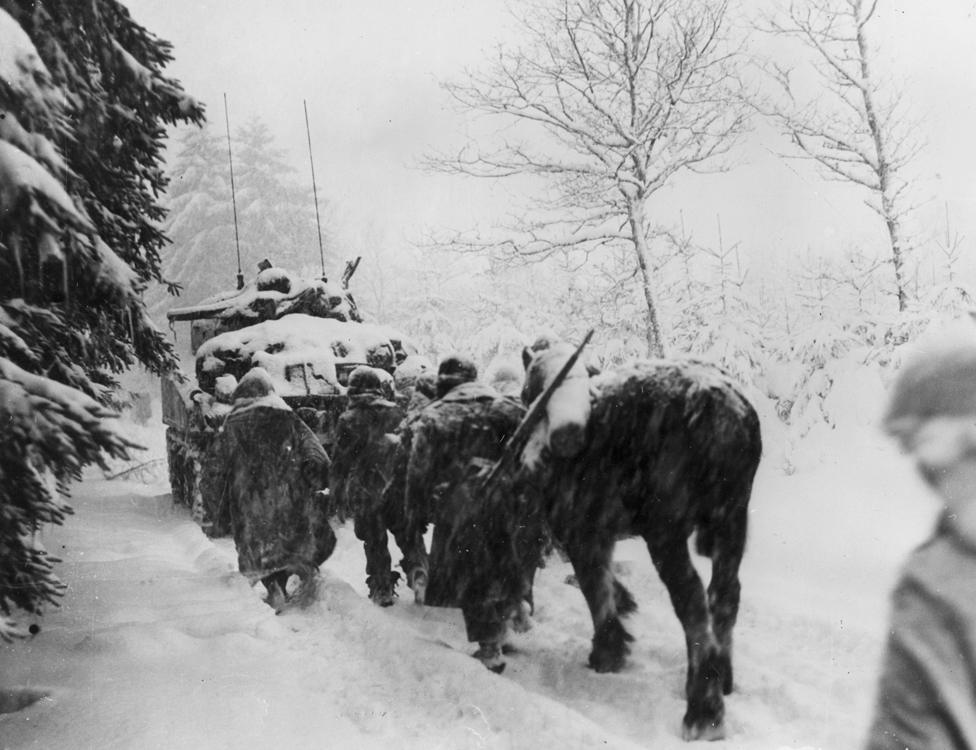
The Battle of the Bulge killed half of Dutch Schultz's regiment
But O'Neill cautions that epigenetic marks are most likely to indicate a predisposition rather than an inevitable outcome - and they can be reversed, she says.
Epigenetics aside, the study of veterans receiving war pensions for psychiatric illness also reconfirms the obvious point that, unlike "Dutch" Schultz and "Eric" Cooper, people can get better. These days cognitive behavioural therapy (CBT) is often, though not always, effective.
And trauma can be turned into something positive, O'Neill argues. "People often talk about how their lives are better for it," she says. "Mum and dad have suffered adversity, but children have overcome that. They are strong. They make a commitment that their own children will not be exposed to it."
Carol Schultz Vento is the author of The Hidden Legacy of World War II, a Daughter's Journey of Discovery
You may also be interested in:
Suicide in Northern Ireland: 'I have no sons left'
Join the conversation - find us on Facebook, external, Instagram, external, YouTube, external and Twitter, external.
